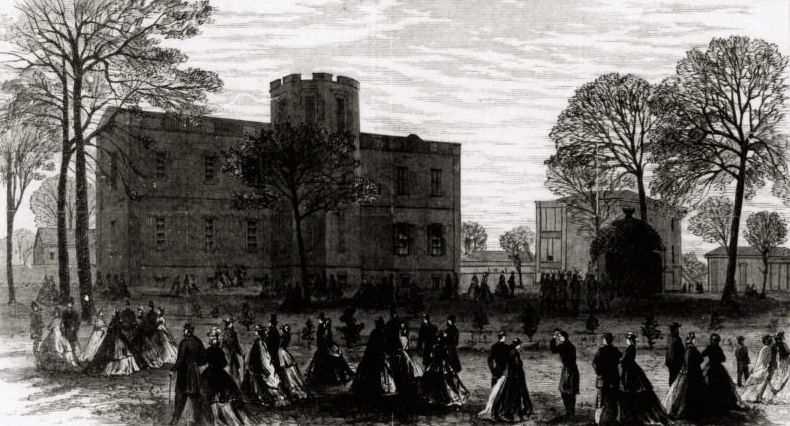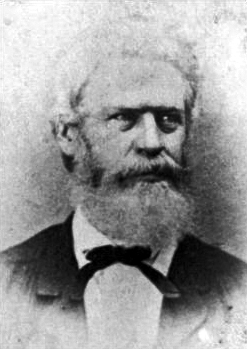|
Indian Cavalry
Indian cavalry is the name collectively given to the Midwest and Eastern American Indians who fought during the American Civil War, most of them on horseback and for the Confederate States of America. Indian units in the CS Armed forces Cherokee Nation * 1st Cherokee Mounted Rifles – Col. (later Brigadier) Stand Watie, Col. John Drew * Thomas' Legion / 69th North Carolina Infantry – Col. William H. Thomas * Scales'/Fry's Battalion of Cherokee Cavalry * Meyer's Battalion of Cherokee Cavalry * Cherokee Battalion of Infantry * 2nd Cherokee Artillery Battery * Livingston's Cherokee Spikes Chickasaw Nation * 1st Regiment of Chickasaw Infantry * 1st Regiment of Chickasaw Cavalry – Col. William L. Hunter * 1st Battalion, Chickasaw Cavalry (Shecoe's Btln., Chickasaw Mounted Volunteers) – Lt. Col. Joseph D. Harris, Lt. Col. Lemuel M. Reynolds, Lt. Col. Martin Shecoe Choctaw Nation * 1st Regiment Choctaw & Chickasaw Mounted Rifles – Col. (later Brigadier) Douglas H. Coop ... [...More Info...] [...Related Items...] OR: [Wikipedia] [Google] [Baidu] |
American Indians In The United States
Native Americans, also known as American Indians, First Americans, Indigenous Americans, and other terms, are the Indigenous peoples of the mainland United States (Indigenous peoples of Hawaii, Alaska and territories of the United States are generally known by other terms). There are 574 federally recognized tribes living within the US, about half of which are associated with Indian reservations. As defined by the United States Census, "Native Americans" are Indigenous tribes that are originally from the contiguous United States, along with Alaska Natives. Indigenous peoples of the United States who are not listed as American Indian or Alaska Native include Native Hawaiians, Samoan Americans, and the Chamorro people. The US Census groups these peoples as " Native Hawaiian and other Pacific Islanders". European colonization of the Americas, which began in 1492, resulted in a precipitous decline in Native American population because of new diseases, wars, ethnic cleansing, a ... [...More Info...] [...Related Items...] OR: [Wikipedia] [Google] [Baidu] |
John Ritchie (abolitionist)
John Ritchie (July 17, 1817 – August 31, 1887) was an American abolitionist in Kansas who served in the Union Army during the American Civil War Early life Ritchie moved from Franklin, Indiana to Topeka, Kansas Territory, in early spring of 1855 in search of cheap land and to help Kansas enter the country as a "free" state. His wife, Mary Jane Shelledy Ritchie, was the fifth woman to settle in Topeka and their young son, Hale was the third child. As early settlers they lived in a dugout through the first winter and around 1856 had constructed and moved into a limestone house that still stands in Topeka today, located at 1116 SE Madison. He was selected to serve as a delegate in two of the four Kansas constitutional conventions: Leavenworth (1858) and Wyandotte (1859). Ritchie was part of the Bleeding Kansas episode in history and was engaged in various acts opposing the expansion of slavery in Kansas Territory. Ritchie was a close associate and supporter of the notorious po ... [...More Info...] [...Related Items...] OR: [Wikipedia] [Google] [Baidu] |
Arkansas In The American Civil War
During the American Civil War, Arkansas was a Confederate state, though it had initially voted to remain in the Union. Following the capture of Fort Sumter in April 1861, Abraham Lincoln called for troops from every Union state to put down the rebellion, and Arkansas and several other states seceded. For the rest of the civil war, Arkansas played a major role in controlling the Mississippi River, a major waterway. Arkansas raised 48 infantry regiments, 20 artillery batteries, and over 20 cavalry regiments for the Confederacy, mostly serving in the Western Theater, though the Third Arkansas served with distinction in the Army of Northern Virginia. Major-General Patrick Cleburne was the state's most notable military leader. The state also supplied four infantry regiments, four cavalry regiments and one artillery battery of white troops for the Union and six infantry regiments and one artillery battery of " U.S. Colored Troops." Numerous skirmishes as well as several signific ... [...More Info...] [...Related Items...] OR: [Wikipedia] [Google] [Baidu] |
Cherokee Nation (1794–1907)
The Cherokee Nation (Cherokee: ᏣᎳᎩᎯ ᎠᏰᎵ, pronounced ''Tsalagihi Ayeli'') was a legal, autonomous, tribal government in North America recognized from 1794 to 1907. It was often referred to simply as "The Nation" by its inhabitants. The government was effectively disbanded in 1907, after its land rights had been extinguished, prior to the admission of Oklahoma as a state. During the late 20th century, the Cherokee people reorganized, instituting a government with sovereign jurisdiction known as the Cherokee Nation. On July 9, 2020, the United States Supreme Court ruled that the Muscogee (Creek) Nation (and by extension the Cherokee Nation) had never been disestablished in the years before allotment and Oklahoma Statehood. The Cherokee Nation consisted of the Cherokee (ᏣᎳᎩ —pronounced ''Tsalagi'' or ''Cha-la-gee'') people of the Qualla Boundary and the southeastern United States; those who relocated voluntarily from the southeastern United States to the ... [...More Info...] [...Related Items...] OR: [Wikipedia] [Google] [Baidu] |
19th Century Cherokee History
19 (nineteen) is the natural number following 18 and preceding 20. It is a prime number. Mathematics 19 is the eighth prime number, and forms a sexy prime with 13, a twin prime with 17, and a cousin prime with 23. It is the third full reptend prime, the fifth central trinomial coefficient, and the seventh Mersenne prime exponent. It is also the second Keith number, and more specifically the first Keith prime. * 19 is the maximum number of fourth powers needed to sum up to any natural number, and in the context of Waring's problem, 19 is the fourth value of g(k). * The sum of the squares of the first 19 primes is divisible by 19. *19 is the sixth Heegner number. 67 and 163, respectively the 19th and 38th prime numbers, are the two largest Heegner numbers, of nine total. * 19 is the third centered triangular number as well as the third centered hexagonal number. : The 19th triangular number is 190, equivalently the sum of the first 19 non-zero integers, that is a ... [...More Info...] [...Related Items...] OR: [Wikipedia] [Google] [Baidu] |
Military History Of The Confederate States Of America
A military, also known collectively as armed forces, is a heavily armed, highly organized force primarily intended for warfare. It is typically authorized and maintained by a sovereign state, with its members identifiable by their distinct military uniform. It may consist of one or more military branches such as an army, navy, air force, space force, marines, or coast guard. The main task of the military is usually defined as defence of the state and its interests against external armed threats. In broad usage, the terms ''armed forces'' and ''military'' are often treated as synonymous, although in technical usage a distinction is sometimes made in which a country's armed forces may include both its military and other paramilitary forces. There are various forms of irregular military forces, not belonging to a recognized state; though they share many attributes with regular military forces, they are less often referred to as simply ''military''. A nation's military may f ... [...More Info...] [...Related Items...] OR: [Wikipedia] [Google] [Baidu] |
Confederate Government Civil War Units
This is a list of Confederate government Civil War military units, not raised by any state. Infantry * 1st Confederate Infantry (1st Confederate Regiment, Georgia Volunteers) * 2nd Confederate Infantry * 3rd Confederate Infantry (Marmaduke's 18th Arkansas Infantry Regiment, and additional Tennessee units) * 4th Confederate Infantry (1st Regiment, Alabama, Tennessee, and Mississippi Infantry) * 9th Confederate Infantry (5th Confederate Infantry; 5th Confederate Regiment, Tennessee Infantry) * 23rd Confederate Infantry (Alabama Volunteers) * Bailey's Consolidated Regiment of Infantry * Tucker's Confederate Regiment (also known as "1st Foreign Battalion"; "1st Foreign Legion": former Union prisoners of war) * 1st Battalion, Confederate Infantry (Forney's Regiment) * 8th Confederate Battalion (also known as "2nd Foreign Battalion"; "2nd Foreign Legion": former Union POWs) * Brooks' Battalion, Confederate Regular Infantry (also known as "Brooks Foreign Battalion": former Union POWs) * ... [...More Info...] [...Related Items...] OR: [Wikipedia] [Google] [Baidu] |
Indian Territory In The American Civil War
During the American Civil War, most of what is now the U.S. state of Oklahoma was designated as the Indian Territory. It served as an unorganized region that had been set aside specifically for Native American tribes and was occupied mostly by tribes which had been removed from their ancestral lands in the Southeastern United States following the Indian Removal Act of 1830. As part of the Trans-Mississippi Theater, the Indian Territory was the scene of numerous skirmishes and seven officially recognized battles involving both Native American units allied with the Confederate States of America and Native Americans loyal to the United States government, as well as other Union and Confederate troops. Most tribal leaders in Indian Territory aligned with the Confederacy. A total of at least 7,860 Native Americans from the Indian Territory participated in the Confederate Army, as both officers and enlisted men; most came from the Five Civilized Tribes: the Cherokee, Chickasaw, ... [...More Info...] [...Related Items...] OR: [Wikipedia] [Google] [Baidu] |
Native Americans In The American Civil War
Native Americans in the American Civil War refers to the involvement of various tribes of Native Americans in the United States during the American Civil War. These include: *Catawba in the American Civil War *Cherokee in the American Civil War *Choctaw in the American Civil War *Seminole in the American Civil War See also *Indian Territory in the American Civil War Native Americans in the American Civil War, {{SIA ... [...More Info...] [...Related Items...] OR: [Wikipedia] [Google] [Baidu] |
William A
William is a male given name of Germanic origin.Hanks, Hardcastle and Hodges, ''Oxford Dictionary of First Names'', Oxford University Press, 2nd edition, , p. 276. It became very popular in the English language after the Norman conquest of England in 1066,All Things William"Meaning & Origin of the Name"/ref> and remained so throughout the Middle Ages and into the modern era. It is sometimes abbreviated "Wm." Shortened familiar versions in English include Will, Wills, Willy, Willie, Bill, and Billy. A common Irish form is Liam. Scottish diminutives include Wull, Willie or Wullie (as in Oor Wullie or the play ''Douglas''). Female forms are Willa, Willemina, Wilma and Wilhelmina. Etymology William is related to the given name ''Wilhelm'' (cf. Proto-Germanic ᚹᛁᛚᛃᚨᚺᛖᛚᛗᚨᛉ, ''*Wiljahelmaz'' > German ''Wilhelm'' and Old Norse ᚢᛁᛚᛋᛅᚼᛅᛚᛘᛅᛋ, ''Vilhjálmr''). By regular sound changes, the native, inherited English form of the name shoul ... [...More Info...] [...Related Items...] OR: [Wikipedia] [Google] [Baidu] |
Indian Home Guard (American Civil War)
The Indian Home Guard was a series of volunteer infantry regiments recruited from the Five Civilized Tribes of the Indian Territory to support the Union during the American Civil War. There was also a series of Confederate units of Indian Territory. The leaders of all of the Five Civilized Tribes signed treaties with the Confederacy at the start of the Civil War. Many of the tribal members, however, did not support the Confederacy, and, not being organized, were driven from Indian Territory with a large loss of life. Most fled to Kansas and Missouri. Many of the "Loyal" Indians volunteered for Union duty in order to get control back from the Confederate generals. The Indian Home Guard regiments fought mostly in Indian Territory and Arkansas. It was mainly due to these Loyal Indians that the Five Civilized Tribes were able to retain any of their lands following the end of the Civil War. Indian Home Guard Regiments 1st Regiment, Indian Home Guard Organized at Le Roy, Kansas on M ... [...More Info...] [...Related Items...] OR: [Wikipedia] [Google] [Baidu] |



